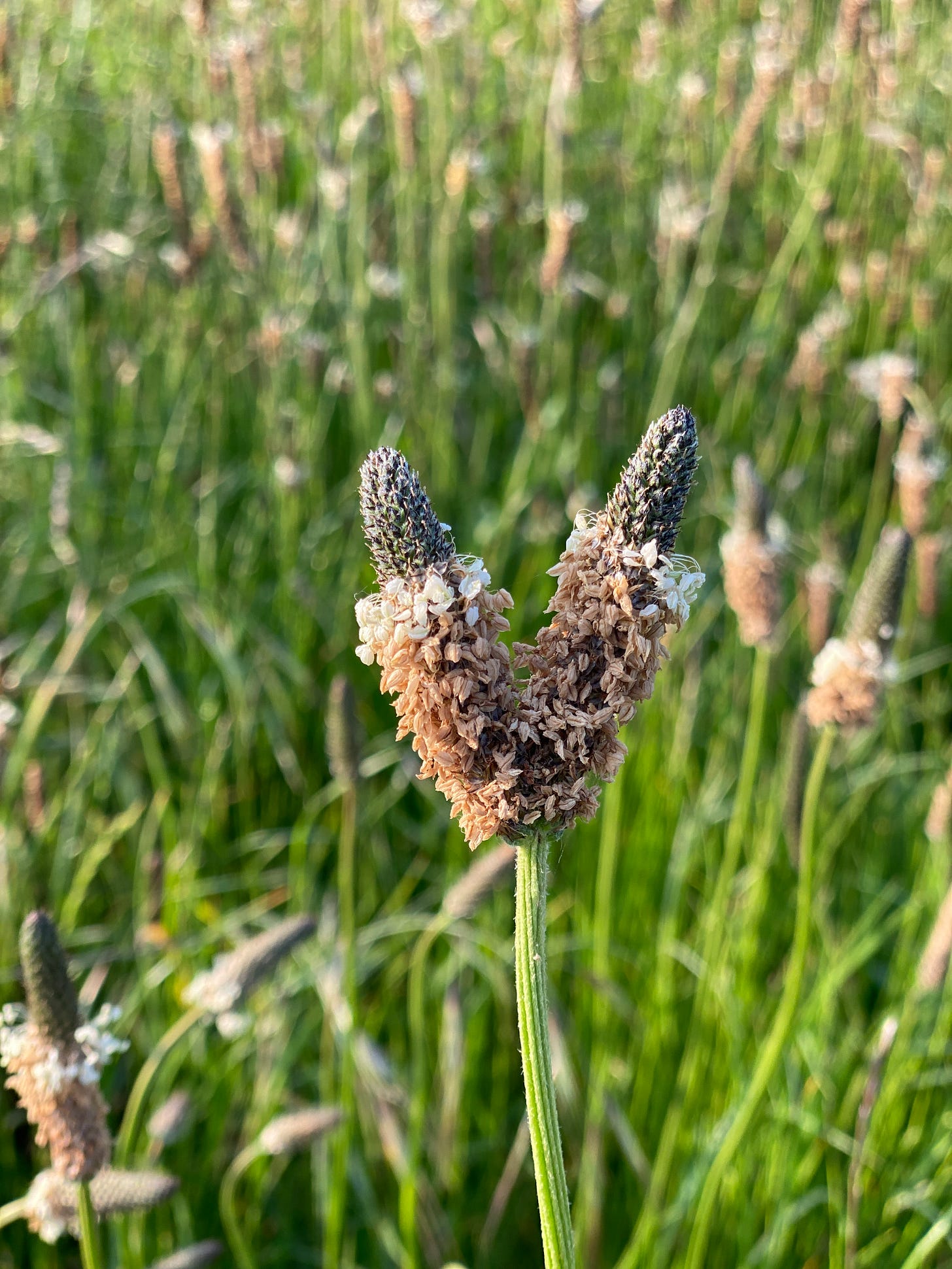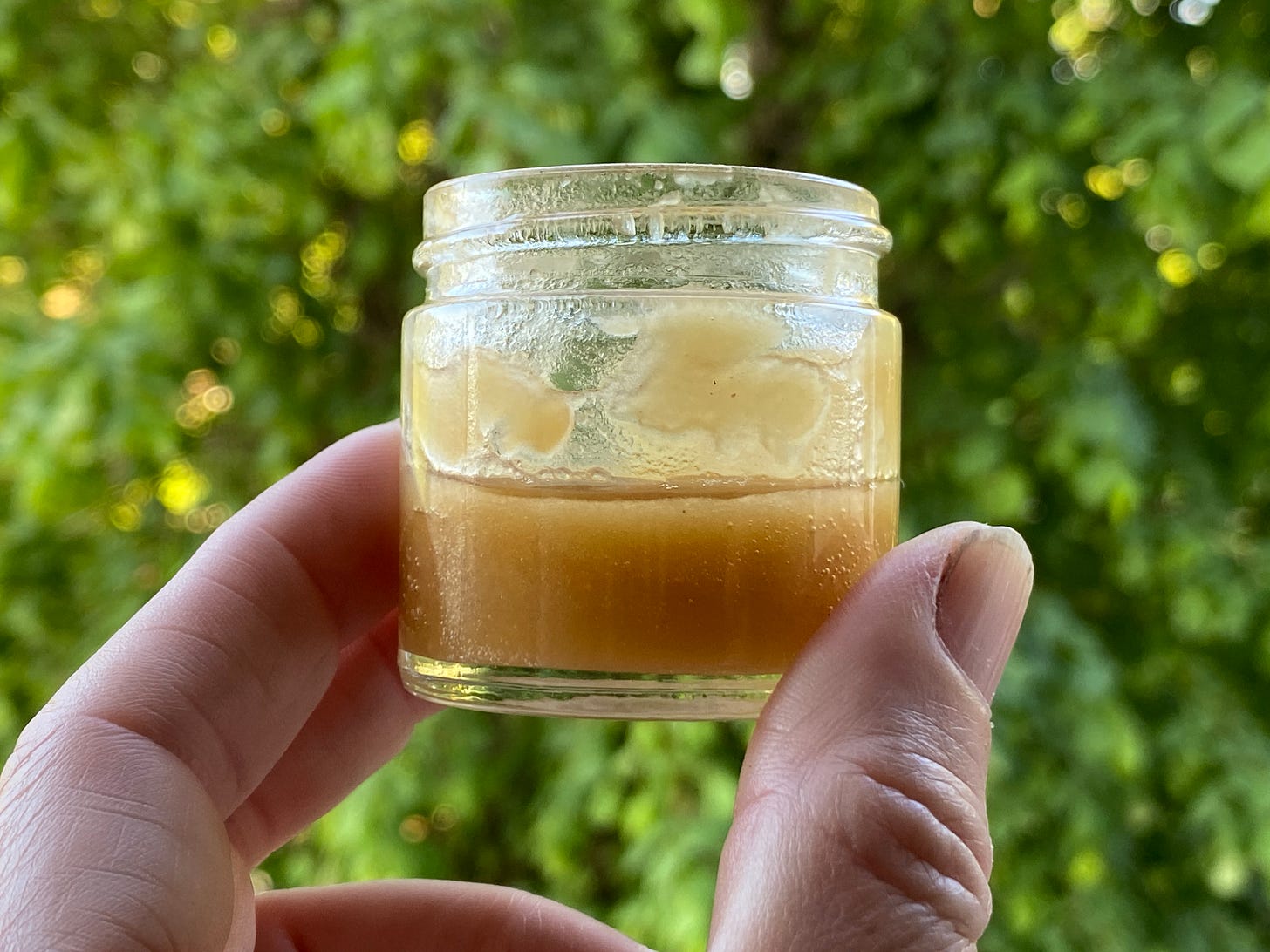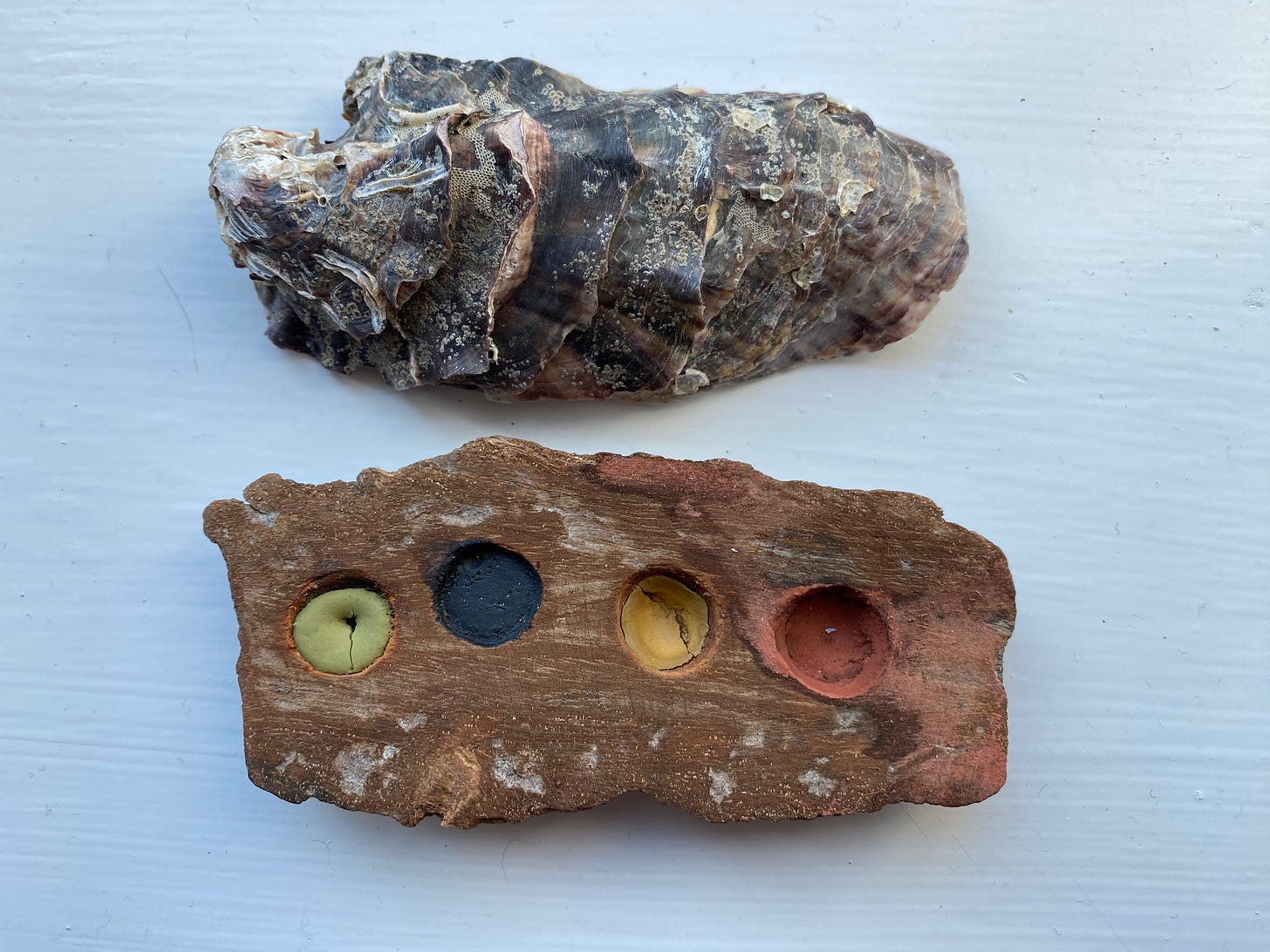Three Vials of Unconforming Beauty
Granularity, pungency, complexity and the primacy of touch.
Aspirant
I have long been in search of a way to write about the real1 without lapsing lazily into superlatives nor anatomising a now-lifeless corpse of the beloved. I have a duty to speak for wisdom only accessible by the body and to somehow say-into-being the unspeakable, and to not just allow, but speak up for, the flawed, the exiled, the tiny, the marginal.
used a phrase online last night so eloquently2 that I want to use it here in another context. We humans have not received our own tradition regarding how we ever know anything or gain wisdom. As embodied creatures, fully animals, yet with a spark of something transformed and transformational in our intelligences, in our spirits, we in no-longer-intact cultures still insist on reifying ideas and devaluing the real, the only place anything actually happens.The physical practices of community, religion, family and love are where the blood of life flows through and are pumped to the rest of the body of humanity. They are like the heart - a muscle - which strengthens itself by working rhythmically.3 I loved how Elizabeth first spoke about the practices and postures of her faith rather than beliefs, and left the door wide open to all those of us who are not of her faith, with her new book, Fully Alive.
The untethered word is to the real what the virtual world is to lived reality: merely a representation. When words are true, they remain nestled into the fabric of being, connected by an umbilicus to the matrix of real life. When they have finished being useful they can and should return to the nourishing silence that surrounds all speech and action.
The Great Mystery is in all things.4 Matter matters. Sacrifice involves physical loss, even death. The container of insight is material, even though the insight is immaterial. This is the great paradox of embodiment, the heart of all wisdom traditions worth their salt, the current lack of which makes empty husks of men, women and children.
Font
Twenty-five years with my hands on others and their hands on me5 are inseparable in any healing or wholeness I obtained from talking cures, medicine, book-learning or care I received. Occasionally I second guess myself and attempt to write as though language was my first language, and I fall short of those whose selves evidently took shape with speech.
Conversely, my self took shape through longing. Expressed in a childhood recurring dream; a huge turning steaming grey flat field of stretching, of emptiness, of pulling. Boundary-less fields, unseen turning at the edges, as though by wheels, tightening. Months as a new born babe in a hospital learning how to sleep wrought a self so tight and thin you could make a drum of it. I write this and immediately know again the shape of lack and the (literally) untenable nature of prolonged absence. Whether we are experiencing the loss of the mother, the beloved, or of God, the place where it is felt is the same. Not in the intellect, not in the mind cave, not in the mouth, the face, not in the head at all. Not even in the mind’s eye. (The eyes themselves also do not long, only reflect longing.) The cranium is not the cradle of longing, (but it can be an Orphic soundbox of the lyre of telling, as mine is now).
The vial of (be)longing is the heart and its nest is the chest. The thoracic cavity filling and emptying with air and blood, wrapped neatly with ribs and intercostal muscles, is where we feel the pull.
Listening to the talk with my beloved last night, I asked myself to stay true in my work and writing to this knowing: that which is not codified is not worthless. The ecstatic6 is not lawful or manageable and never can be, thank goodness.7 The offered hand is more important than the muttered ‘Can I help?’ The gesture, the posture, the cradling of the new-born are before words and even silence8. It may take words to write ‘deeds, not words’, but knowing it is true is a matter of heart, that muscle which never rests.
It is not through words, symbols or devices that the world or the Great Mystery of life is knowable to us. That voice in the head is not ‘us’. A cacophony is not home. Silence is not God, it is the womb of God.
Congregant
1: Storax
The resin from wounded bark of several types of trees of liquidambar species. I first encountered this indescribable smelling fluid gum 25 years ago. Holding the pot to my nose and sniffing brought an aroma I had never experienced pure into my life, even though its use in fragrances is widespread. Almost drunkenly, I said, ‘It smells of everything!’ My friend smiled, ‘Indeed…’ Now, I always keep a vial of it, and offer its scent to friends so that I can watch their delighted faces and hear their unique responses. It is heady yet light, earthy yet watery, almost too much yet simultaneously impossible to grasp.
I am not going to explain it, but here are some offerings for you from the purview of the vial of storax: things I know to be heady, paradoxical, true, from Heidi Gustafson,
, Liz Oldfield.2: The finest honey I have ever tasted
Two weeks ago I was given a tiny jar of rich, pungent unfiltered honey, brought back from Catherine’s late father’s beehives on an island in France, a place that soon she must sell and to which she may not return. The utter preciousness of it is matched by its extraordinarily complex aroma profile, herbal, yeasty, floral, and by its fudge-like melting texture and strange almost-not-sweet-ness. There is a real sense that it is still alive with the spirit of the hive. Each person who smells or tastes it as I open the jar is transported and surprised. Now we eat tiny portions of it each day after breakfast. There will be one more jar, perhaps, in the autumn, from which we will make a herbal, floral mead, to the wonderful recipe by our beloved Mark Watson.
It is the fruition of collective labour, the sensuous warmth of summer and the apt sadness of the eventual melting away of all sweetness, at once on the tongue.
Here are offerings from the purview of the jar of the finest honey, tiny portions of delight to treasure and share: and our faces, my heart, brief as photos , Aikea-Guinea.
3: Maritime pine bark palette filled with earth paints
My first moments beside the Adriatic Sea, bending to beach-comb, a lifelong urge. Taking in hand what my friend Ludovica has just dropped to the sand, a small piece of thick bark, perfectly sized to nestle in my hand. I recall the exquisite paint containers carved by another friend Carrie LaChance, and pocket the bark knowing I will follow her lead. A few days later I take a tiny curved tool and make this palette, fill it with simple red ochre, unrefined yellow clay, soft green earth and finest ground graphite paints, find an oyster shell plucked from the beach to cover it and a curl of birch bark to seal it. It spills a little red before it dries, and attains instant wabi-sabi.
Here are offerings from the purview of the bark palette: Wildness - appreciated, organised, adored but untrammelled: Treasure Boxes by Joumana Medlej, Jonny’s sourdough starter, The Periodic Table by Primo Levi, School of the Unconformed.
Novice
Other recent vessels of note.
Carrying spring water in my bare hands.
Three nestled slipper limpets on the sand.
Returning a fallen slow worm to the cool grass from the hot zig zag.
Six weeks spent deeply in raw materials, (reporting back over next weeks): fish leather, ochre, goat meat, dandelion fibre, gum tragacanth, iron.
Touching curds in a giant vat, leaving a handprint, drinking whey, tasting live cheese starter culture from raw milk.
Broken vessel: When machines of war destroy a city and the fineness of its weaving9 they unpick the handwork of God and weaken the cloth which should hold us all together.
The cloth we weave while away holds us all while we are together. Let us not forget this ever.
This week’s good thing: I am rewatching Robin Of Sherwood for the first time since first seeing it in my teens. It is even more acutely clear that my entire wardrobe, outlook, hobbies, lifegoals and even the aesthetic of this Substack were greatly influenced by this iconic and rightly-loved programme. Ah, sofa time, mead and the great soundtrack by Clannad cannot be beaten. Plus Clannad will be playing again for the 40th anniversary of this soundtrack. They were the first big concert band I ever saw, on the original tour of the album Legend.
Truth, beauty, love, connexion, death, the Great Mystery…
in her session with Dougald Hine as she was speaking about how the Church had not ‘received its own tradition’ about being in relation to all of creation, the more than human world.
Just think, the seat of love, the bursting-forth place of everything vast, is a shunting, vestibular vessel, endlessly emptying and filling, ferrying viscous liquids. Why do we feel such things here, and not, say, in the arms which encircle, the hands which grasp, or the stomach, which receives nutrition? Because it never ceases working and it is autonomously animated (beating even on its own) and in that sense, as well as many others, is not unlike the Great Mystery.
Not explaining all things.
T’ai Chi partner work.
For instance, in the Church, Pentecostalism as mentioned by Elizabeth.
It is like a scent, which rises unbidden, can rarely be hidden but can sometimes be masked.
In a later post I will return to a general appreciation of Max Picard’s The World of Silence, including mention of the Taoist text that clearly influences it, plus a critique of the one chapter full of an astonishingly garish yet flimsy demonisation of touch.
The famous weavers of Gauze, Ghazza, Gaza.













I can't believe you mentioned Robin of Sherwood! I have recently started watching it for the first time (at the suggestion of a new friend who's in the 40th anniversary audios) and am hooked... They had me at the inclusion of indigenous earth magic!
Amazing article, looking forward to the audio! 🙏